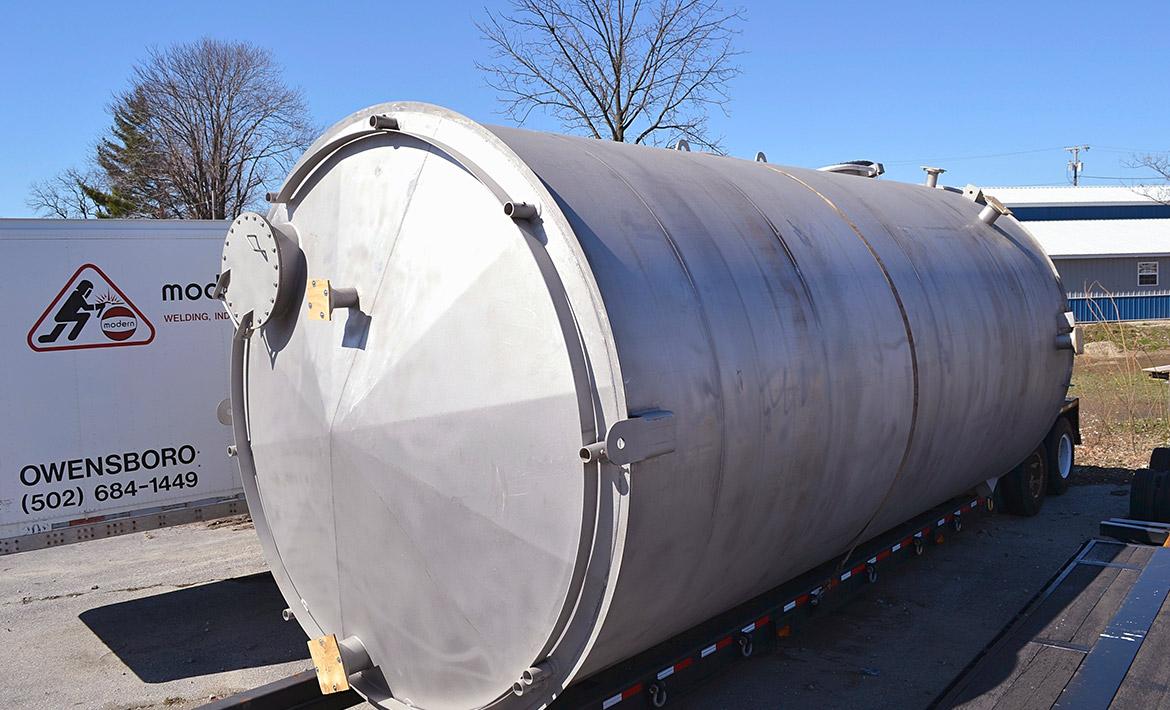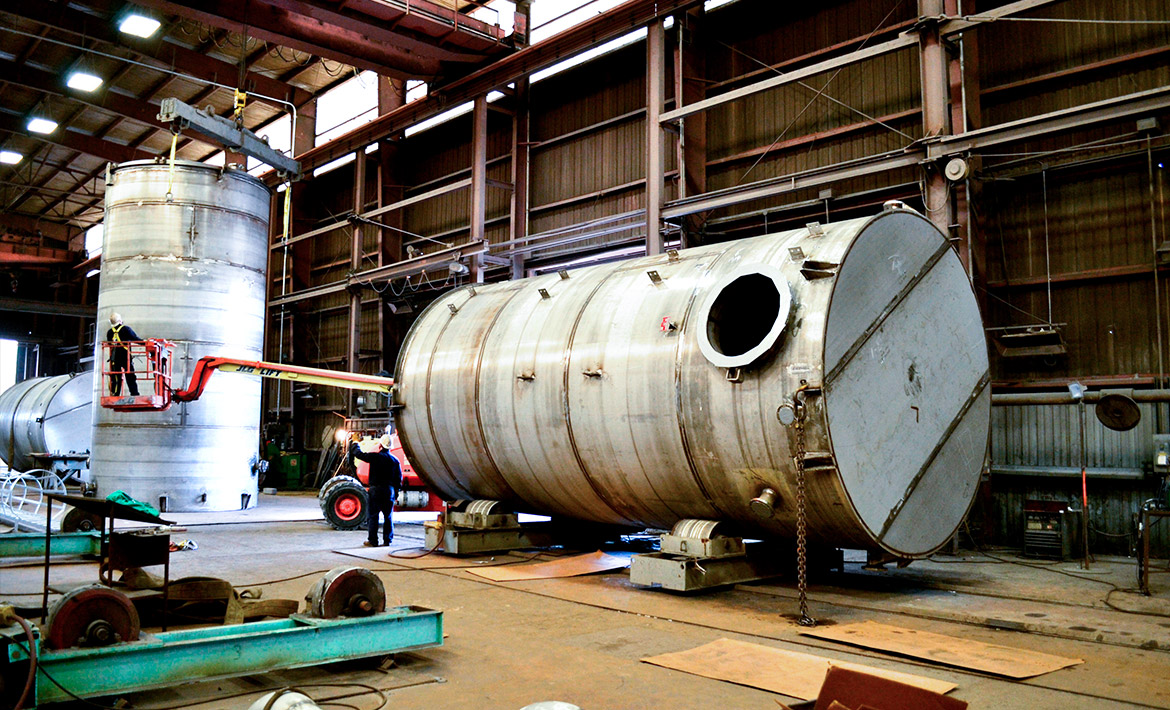The Major Role of API 650 Welding Inspection in Safety Compliance
A Detailed Appearance at the Setup Refine of Welding Inspection Techniques
Welding evaluation is a critical procedure that assures architectural honesty and safety and security. The installment of assessment methods includes several systematic actions, each indispensable to attaining trusted outcomes. From planning and tool option to performing aesthetic and non-destructive tests, each stage needs cautious attention. Recognizing these treatments can considerably boost quality control in welding tasks. What obstacles develop in executing these techniques, and just how can they be efficiently addressed?
Understanding the Importance of Welding Examination
Welding evaluation is a crucial part of making sure architectural honesty and safety and security in building and manufacturing processes. This method involves evaluating bonded joints for issues, ensuring that they fulfill certain standards and laws. By systematically gauging weld quality, inspectors can determine problems such as splits, gaps, and incomplete combination, which can jeopardize the toughness and toughness of structures.
The importance of welding evaluation expands past immediate security concerns; it assists protect against expensive failings and possible threats in the long-term. Effective assessment methods foster conformity with industry standards, therefore enhancing the total reliability of welded elements. In enhancement, a durable examination process contributes to maintaining the track record of suppliers and builders, as it guarantees clients of the high quality of their jobs. Eventually, comprehending the significance of welding examination is crucial for promoting safe construction practices and ensuring the long life of crucial framework and items.
Choosing the Right Tools for Assessment
When choosing the appropriate devices for inspection, it is important to consider the details requirements of the welding procedure and the materials included. Numerous inspection techniques, such as aesthetic, ultrasonic, and radiographic testing, require distinctive tools tailored to their one-of-a-kind demands. For visual examinations, tools like magnifying calipers and glasses are critical for examining weld top quality. Ultrasonic testing requires specific tools with the ability of transmitting and getting acoustic waves to spot interior imperfections. Radiographic screening, on the various other hand, uses X-ray or gamma-ray resources alongside sensitive film or digital detectors to expose incongruities.
Additionally, personal protective devices (PPE) is vital to guarantee the safety of inspectors during assessments. Choosing the right tools not only enhances the accuracy of evaluations however likewise adds to the general stability and security of the welding job. Consequently, a complete understanding of offered tools and their applications is essential for effective welding inspection.
Planning for the Examination Refine
Before initiating the inspection procedure, it is necessary to establish a comprehensive plan that lays out the range and objectives of the analysis. This strategy ought to consist of particular criteria that specify what constitutes appropriate high quality in the welding job being checked. Identifying the pertinent codes and requirements is vital, as they will certainly direct the inspection requirements and approaches.
In addition, employees entailed in the inspection needs to be sufficiently trained and accredited in welding inspection methods to guarantee dependability and precision. A checklist can be valuable in organizing the different aspects of the evaluation, varying from devices preparedness to ecological conditions that can affect the evaluation.

Finally, logistical considerations such as organizing, readily available sources, and interaction between employee should be addressed. By preparing systematically, examiners can enhance the performance of the assessment and make sure that all essential elements are duly taken into consideration prior to waging the inspection itself.
Performing Aesthetic Evaluations

Performing aesthetic inspections is a crucial action in the welding assessment procedure, calling for mindful prep work to guarantee effective assessment. Examiners need to recognize with vital defect signs that can indicate prospective problems in weld high quality. By concentrating on these elements, one can improve the general dependability of the assessment end results.
Preparing for Visual Evaluation
Visual inspection serves as a vital very first step in the welding evaluation process, assuring that any potential defects are recognized early (API 650 Welding Inspection). Correct prep work is necessary pop over to this web-site for reliable aesthetic examination. Assessors must begin by evaluating appropriate paperwork, consisting of welding procedures and requirements, to comprehend the job demands. They must collect required tools, such as multiplying glasses, flashlights, and suitable personal safety equipment (PPE) A complete evaluation of the inspection location is important; inspectors must validate it is cost-free and tidy of blockages. In addition, it is essential to establish perfect illumination conditions to improve presence of welds. By taking these primary actions, examiners can develop an atmosphere for determining disparities and assuring the stability of the welded structures
Trick Problem Indicators
A comprehensive understanding of crucial defect signs is important throughout visual assessments to assure the quality and security of bonded joints. Assessors ought to concentrate on details indicators such as fractures, porosity, damages, and insufficient blend. Cracks may appear as sharp lines and can jeopardize architectural honesty. Porosity manifests as small holes that can deteriorate weld toughness. Undercuts, which are grooves along the weld edge, can bring about stress concentration. Incomplete combination suggests that the weld metal did not appropriately bond with the base product, leading to a weak joint. By methodically recognizing these issues, assessors can identify conformity with sector criteria and boost the general dependability of bonded structures, ultimately adding to more secure functional conditions.
Applying Non-Destructive Evaluating Methods

Various non-destructive testing (NDT) techniques are indispensable to assuring the stability of welded structures without endangering their capability. These techniques allow assessors to examine weld high quality and discover problems without creating damages to the materials being tested. Usual NDT methods include ultrasonic screening, radiographic testing, magnetic fragment testing, and color penetrant screening. Each method offers a particular objective, resolving different kinds of problems such as cracks, porosity, or insufficient fusion.
Applying NDT techniques calls for a methodical strategy, beginning with picking the suitable approach based on the products and the nature of the weld. Educating workers in these strategies is vital for exact outcomes. Additionally, establishing clear treatments and standards try this assurances uniformity throughout the evaluation procedure. By incorporating NDT into the welding assessment workflow, organizations can boost the reliability of their products while lessening potential risks related to architectural failures. This proactive technique inevitably contributes to preserving security and top quality standards in welded buildings.
Analyzing and documenting Evaluation Results
Reliable documents and evaluation of inspection results are vital parts of the welding examination procedure. Exact documents of inspection findings serve as a reference for quality control and compliance with market requirements. API 650 Welding Inspection. Assessors must use organized kinds or electronic platforms to log information such as the kind of weld, examination approaches utilized, and any type of inconsistencies determined during the evaluation
As soon as information is accumulated, complete evaluation is important. This includes contrasting outcomes against developed requirements to determine trends or reoccuring problems. Statistical devices may be employed to evaluate flaws and evaluate their effect on total weld high quality.
Moreover, reliable communication of searchings for to appropriate stakeholders is crucial. Summaries and records ought to be succinct and clear, highlighting key understandings and recommendations for rehabilitative actions. By methodically analyzing and recording inspection results, companies can foster constant renovation in welding practices and boost product integrity.
Often Asked Inquiries
What Qualifications Are Needed to Come To Be a Welding Inspector?
To end up being a welding assessor, one generally requires pertinent certifications such as AWS CWI, together with experience in welding techniques, knowledge of welding codes, and proficiency in assessment methods to ensure high quality and safety requirements.
Just How Typically Should Welding Inspections Be Performed?
Welding inspections need to be conducted on a regular basis, commonly after each weld is completed, and periodically during jobs. Factors such as project complexity, industry standards, and regulatory requirements can influence the frequency of these inspections.
What Is the Cost of Welding Inspection Services?
The cost of welding inspection services differs substantially based upon variables such as task dimension, complexity, and place. Generally, prices vary from $100 to $150 per hour, with extra fees for specialized testing and qualifications.
Exist Certifications for Welding Inspectors?
Yes, there are different certifications for welding assessors, consisting of those provided by the American Welding Society (AWS) and the International Institute of Welding (IIW) These certifications assure examiners possess the essential abilities and understanding for effective analyses.

Just how Do I Choose an Assessment Provider?
To pick an inspection check out here company, one need to evaluate qualifications, experience, market online reputation, and consumer reviews. Additionally, comparing solution offerings and pricing can help assure the picked supplier meets particular task needs effectively.
In addition, workers involved in the assessment should be effectively trained and licensed in welding assessment strategies to assure integrity and precision. Conducting visual evaluations is a necessary action in the welding assessment process, requiring careful prep work to assure efficient examination. Visual inspection offers as an essential initial step in the welding inspection procedure, assuring that any type of potential defects are recognized early. Efficient documentation and evaluation of assessment results are essential parts of the welding assessment process. Welding examinations must be conducted routinely, typically after each weld is finished, and periodically throughout jobs.